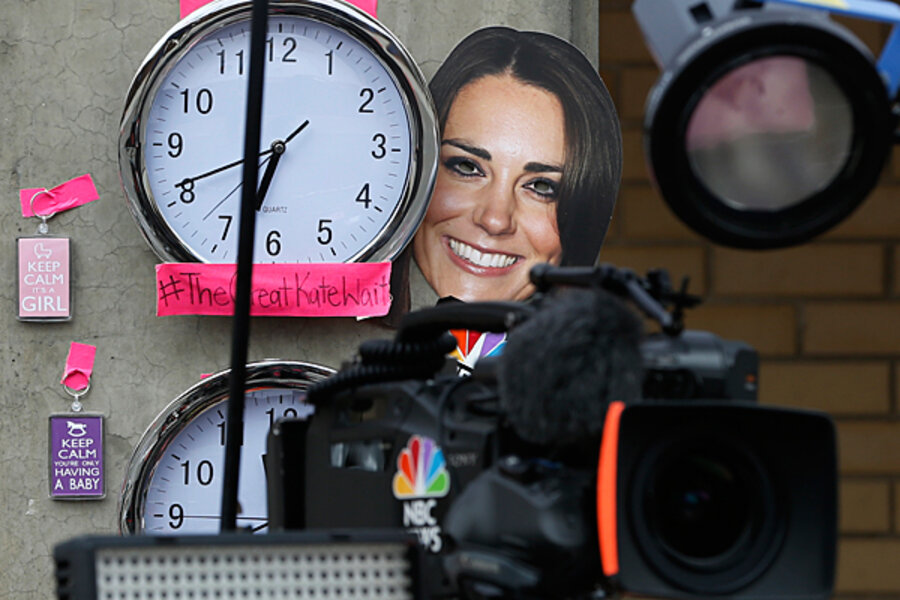Royal baby birth on the cheap? Why US births can cost much more.
Loading...
Is it possible that the birth of the heir to the British throne could cost less than the delivery of your everyday American Joe or Jane?
It’s not as far-fetched as one would assume. Sure, the Duchess of Cambridge, better known as Kate Middleton, is giving birth in a private wing of one of the top hospitals in London, with a suite that includes a birthing pool, satellite TV, radio, Internet access, daily newspapers, and a private catering staff.
But the United States boasts the highest costs for childbirth in the world, according to a recent report by the New York Times and the charges for delivery have about tripled since 1996.
For women without insurance in the United States, or for the 62 percent of women in private insurance plans that lack maternity coverage, the cost of maternity care could range from $4,000 to $45,000.
Comparatively, the cost of delivery at the duchess’s posh birthing suite, the same place where Princes William and Harry were born in the 1980s, reportedly costs up to £10,000, or about $15,300. Of course, that doesn't include the reported pre-delivery yoga classes at Kensington Palace or visits to private birthing coaches, and the cost will increase if the duchess uses extra services during the birth, like a Caesarean section or pain-reducing drugs.
Beyond the royal scale, average births in the US far exceeds the costs in Britain.
In 2012, the average amount paid for a conventional delivery in the US was $9,775 compared with $2,641 across the pond. For Caesarean deliveries, the cost rises to an average $15,041 in the US and $4,435 in Britain.
Those costs, calculated by the International Federation of Health Plans, are for the actual payments agreed to by insurance companies or other payers for services, rather than billed charges, which are higher. The costs include routine prenatal, delivery, and postpartum obstetric care.
The reason American births are so much higher is because the system is structured so services are paid for separately, and health providers have a financial incentive to encourage American women to get as many tests, scans, and services as possible, analysts say.
“It’s not primarily that we get a different bundle of services when we have a baby,” Gerard Anderson, an economist at the Johns Hopkins School of Public Health who studies international health costs told The New York Times in June. “It’s that we pay individually for each service and pay more for the services we receive.”
Katy Kozhimannil, a professor at the University of Minnesota School of Public Health who studies the cost of women’s health care, told the Times that it’s the “piecemeal way Americans pay for this life event that encourages overtreatment and overspending.”
The fact that a sizable percentage of American mothers, more than 30 percent, chose to have Caesarean sections or labor induced with drugs also raises costs, the Times reports. According to the American College of Obstetricians and Gynecologists, American women have such procedures in higher numbers than those of other developed countries and far above rates the organization considers necessary.
American parents can take solace in one report that shows raising a child may be less expensive in the United States than in Britain. A report by the US Department of Agriculture found that the cost of raising a child born in 2011 through age 18 would run $234,900. A similar report by British insurer LV found that raising a child across the pond totals £169,613 or $256,000, according to the Financial Times.








